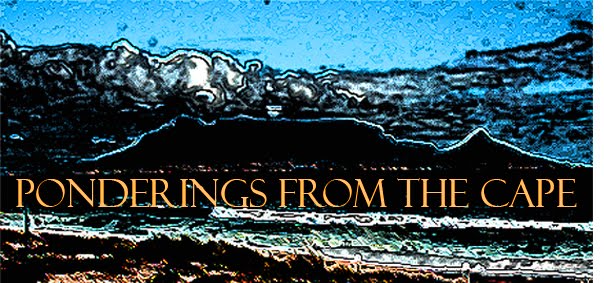I was multitasking – working and listening with one ear to one of the FIFA World Cup matches on the radio - when my concentration was interrupted by the little voice that says “time you wrote the Ponderings for this month.” Well of course the inevitable happened – I started thinking about a link between the big celebration of the Beautiful Game here in South Africa and what I think of as the Beautiful Science.
First to the rescue was Albert Einstein. Since I am working on updating my talks about his life and work, I am reading yet another biography and from thoughts about space, time and gravity it was one quick mental jump to thinking that the world’s football lovers had been drawn as if by some strong force of gravity to South Africa.
And from where it was another step to the spherical shape of footballs and suddenly I had a link: round things and spheres!
In astronomy a lot of things are round or almost round or are shaped by gravity into roughly spherical objects. Even the IAU’s “new” definition of a planet includes the condition that the body should contain enough mass to assume hydrostatic equilibrium (and as a result a nearly spherical shape) as one of the conditions for an object to be designated a planet.
Stars are (roughly speaking) spherical, although unlike the Jabulani ball, they are not uniform in size, colour or mass. With the three-dimensional shape of stars - the main objects of astronomy - associated with footballs, I also thought about the two-dimensional picture of a soccer ball. It can be drawn as a circle and this reminded me about many “circles” in astronomy.
The orbits of the planets around the Sun are elliptical in shape - although in fact, all except Mercury are very nearly circular. Again I was reminded of Einstein because the anomaly regarding Mercury’s orbit (it precesses around the Sun at an excess of 43 arcseconds per century) was one of the things that was explained by Einstein’s General Theory of Relativity. The anomaly is almost exactly what the General Theory predicted for a planet that moves in the curved space caused by the proximity of the much larger mass of its host star.
I’m not sure, however, that the General Theory can explain the between the gravitational attraction of the vacant space between goal posts and a football and why some teams seem to use that attraction more effectively than others … so let’s move on.
Many of our most important instruments associated with observing celestial objects have cylindrical or round shapes (as seen from the front) incorporated into their designs – mirrors, lenses, eyepieces, telescope tubes, tripod legs, binoculars, setting circles, planispheres. Many observatory domes are traditionally (semi) spherical in shape and so are the domes of planetariums. Most of those are intended, in the end, to direct light coming from distant objects to the round pupils of our eyes (with their round irises and retinas as seen from the front). I had found another – admittedly tenuous - link, because many of the same skygazers’ eyes have been focussed on balls (and the international football stars kicking them about) during the FIFA World Cup!
So to answer the question whether there is a link between football and astronomy, the answer is strictly speaking “no”. But I could not resist the fun of looking for some similarities.
Links of a different kind
To end this month’s Ponderings, some links of a different nature – links to a potpourri of some fascinating articles that can be accessed via the Internet:
• For those interested in climate change and the effects on the human race: Stephanie Dearing's article “Australian scientist gives human race another 100 years”
• Remember Hanny’s Voorwerp, the object discovered by Dutch school teacher Hanny Van Arkel while participating in Galaxy Zoo online? Here is Dr Emily Baldwin’s interesting article about radio observations shedding new light on the Voorwerp
• With radio astronomy becoming ever bigger in South Africa, there is an interesting article about a fellow amateur astronomers, Dale Hooper in Utah, who built his own radio observatory. Maybe his story, together with those of our own local satellite watcher Greg Roberts and others, will inspire some of our members to do the same.
• The Independent has an interesting article about the 520-day programme simulating a journey to Mars. Often we wonder about the technologies that will make such a journey possible – but this programme will give insight into that most important ingredient for a manned mission to Mars, namely how human beings would adapt to stressful, long-term journeys in space.
* Not a single note was produced by the author on a Vuvuzela before, during or since the writing of this article
Subscribe to:
Post Comments (Atom)






No comments:
Post a Comment
Add your comment(s) here: